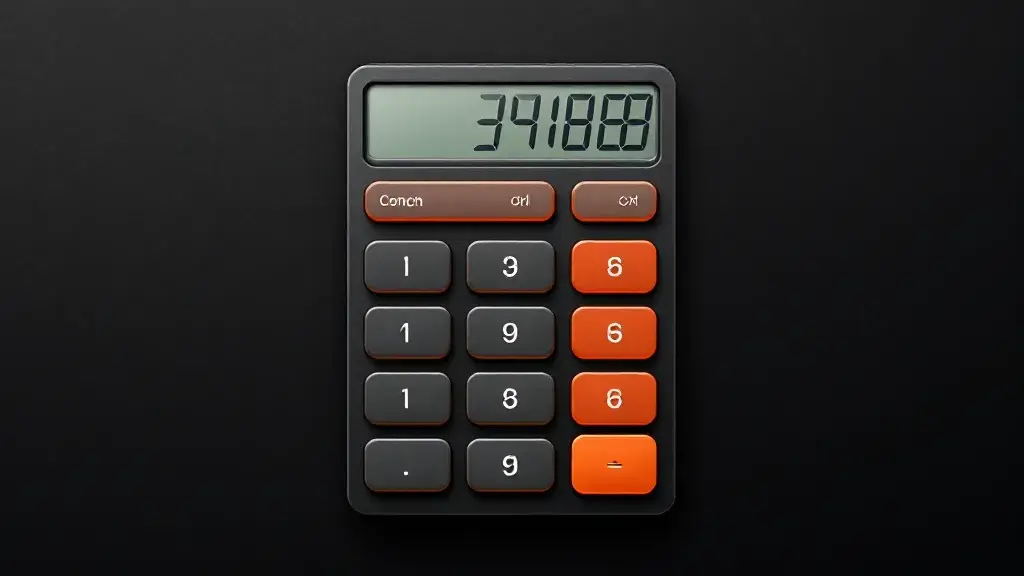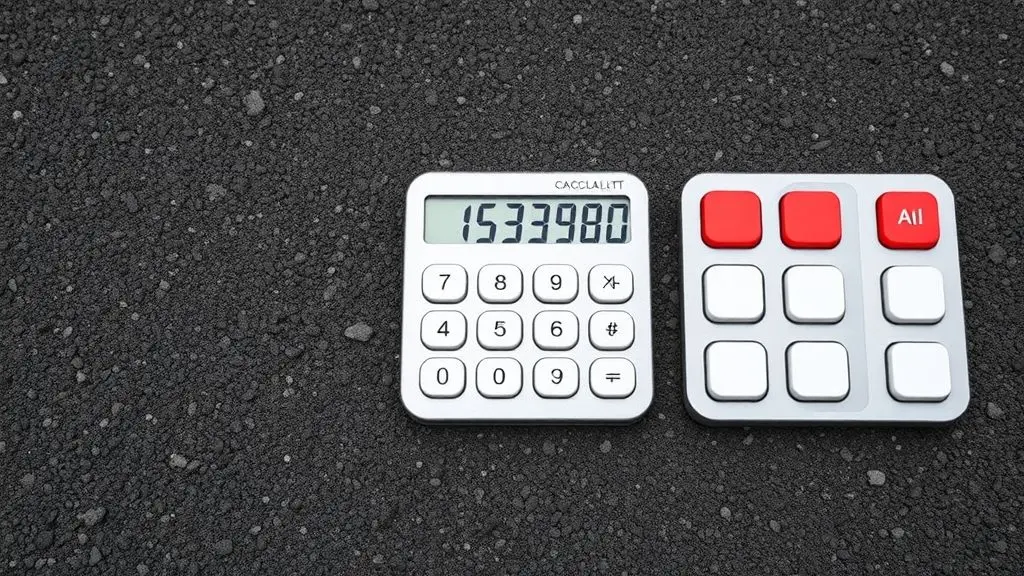Asphalt Calculator
Asphalt Calculator
Table of Contents
- Introduction to Asphalt Calculator
- Why Use an Asphalt Calculator?
- How Does an Asphalt Calculator Work?
- Key Inputs Required for Asphalt Calculation
- Step-by-Step Guide to Measuring for Asphalt
- Types of Asphalt and Their Impact on Calculations
- Common Mistakes When Using an Asphalt Calculator
- How to Verify Asphalt Calculator Results
- Manual Calculation vs. Digital Asphalt Calculator
- Best Asphalt Calculator Tools Available Online
- Frequently Asked Questions (FAQs)
- Conclusion
1. Introduction to Asphalt Calculator
An Asphalt Calculator is a tool used to estimate the quantity of asphalt needed for a paving project. It helps contractors, engineers, and homeowners determine the correct amount of asphalt required based on area dimensions, thickness, and asphalt density.
Asphalt paving projects include driveways, parking lots, roads, and walkways. Accurate calculations prevent material wastage, cost overruns, and project delays.
2. Why Use an Asphalt Calculator?
Using an asphalt calculator offers several benefits:
- Cost Estimation: Helps in budgeting by providing an accurate estimate of material costs.
- Prevents Shortages or Overages: Ensures you order the right amount of asphalt.
- Time-Saving: Quick calculations compared to manual methods.
- Project Planning: Assists in scheduling deliveries and labor.
3. How Does an Asphalt Calculator Work?
An asphalt calculator uses mathematical formulas to compute the volume and weight of asphalt required. The basic formula is:
[ \text{Asphalt Needed (tons)} = \frac{\text{Length (ft) × Width (ft) × Depth (in) × Asphalt Density (lbs/ft³)}}{2000} ]
Steps Involved:
- Input Dimensions: Enter length, width, and depth.
- Select Asphalt Type: Different asphalt mixes have varying densities.
- Calculate: The tool computes the required asphalt in tons or cubic yards.
4. Key Inputs Required for Asphalt Calculation
To get accurate results, the following inputs are necessary:
A. Area Measurements
- Length & Width: Measured in feet or meters.
- Shape of Area: Rectangular, circular, or irregular (requires breakdown into smaller sections).
B. Thickness (Depth) of Asphalt
- Standard Thickness:
- Driveways: 2-3 inches
- Parking Lots: 3-4 inches
- Roads: 4-6 inches
C. Asphalt Density
- Typical Density: 145 lbs/ft³ (varies based on mix type).
- Types of Asphalt Mixes:
- Hot Mix Asphalt (HMA): 145-150 lbs/ft³
- Cold Mix Asphalt: 140-145 lbs/ft³
- Porous Asphalt: 130-140 lbs/ft³

5. Step-by-Step Guide to Measuring for Asphalt
Step 1: Measure the Area
- Use a measuring tape or wheel for small areas.
- For large projects (parking lots), use GPS or surveying tools.
Step 2: Convert Measurements to Feet
- If using meters, convert to feet (1 meter = 3.28084 feet).
Step 3: Determine Asphalt Thickness
- Decide the required depth based on usage (e.g., 3 inches for driveways).
Step 4: Calculate Volume
[ \text{Volume (ft³)} = \text{Length × Width × (Depth/12)} ]
(Divide depth by 12 to convert inches to feet.)
Step 5: Convert Volume to Tons
[ \text{Tons} = \frac{\text{Volume (ft³) × Density (lbs/ft³)}}{2000} ]
Example Calculation:
- Driveway: 20 ft (L) × 10 ft (W) × 3 in (D)
- Volume: ( 20 × 10 × (3/12) = 50 \, \text{ft³} )
- Tons Needed: ( (50 × 145) / 2000 = 3.625 \, \text{tons} )
6. Types of Asphalt and Their Impact on Calculations
Different asphalt mixes have varying densities, affecting the total quantity needed:
| Asphalt Type | Density (lbs/ft³) | Best For |
|---|---|---|
| Hot Mix Asphalt (HMA) | 145-150 | Roads, High-Traffic Areas |
| Warm Mix Asphalt (WMA) | 140-145 | Eco-Friendly Projects |
| Cold Mix Asphalt | 135-140 | Temporary Repairs |
| Porous Asphalt | 130-140 | Drainage Solutions |
7. Common Mistakes When Using an Asphalt Calculator
- Incorrect Measurements: Not accounting for curves or slopes.
- Wrong Density Input: Using default values without checking mix type.
- Ignoring Compaction: Asphalt compacts after laying, increasing density.
- Unit Confusion: Mixing feet with meters or inches with centimeters.
8. How to Verify Asphalt Calculator Results
- Cross-Check with Manual Calculation
- Consult a Professional for large projects.
- Use Multiple Online Calculators for comparison.
9. Manual Calculation vs. Digital Asphalt Calculator
| Factor | Manual Calculation | Digital Calculator |
|---|---|---|
| Accuracy | Prone to errors | More precise |
| Speed | Time-consuming | Instant results |
| Complex Shapes | Difficult | Easy (if supported) |
| User-Friendliness | Requires math skills | Simple interface |
10. Best Asphalt Calculator Tools Available Online
- Calculator.net Asphalt Calculator
- Omni Calculator Asphalt Calculator
- BuildBook Asphalt Estimator
- Civil Engineering Calculators (Asphalt Volume Tool)
11. Frequently Asked Questions (FAQs)
Q1. How much does 1 ton of asphalt cover?
- At 2-inch depth: ~80 sq ft
- At 3-inch depth: ~53 sq ft
Q2. Can I use an asphalt calculator for irregular shapes?
- Yes, but you must divide the area into smaller rectangles or triangles.
Q3. How do I adjust for compaction?
- Increase the calculated quantity by 5-10% to account for compaction.
Q4. What if my area has slopes?
- Measure the average depth or use 3D mapping tools for precision.
12. Conclusion
An Asphalt Calculator is an essential tool for accurate paving estimates. By inputting correct dimensions, thickness, and asphalt type, you can avoid costly mistakes. Whether using manual methods or digital tools, always verify calculations for best results.
For large-scale projects, consulting a paving professional ensures optimal material usage and cost efficiency.
